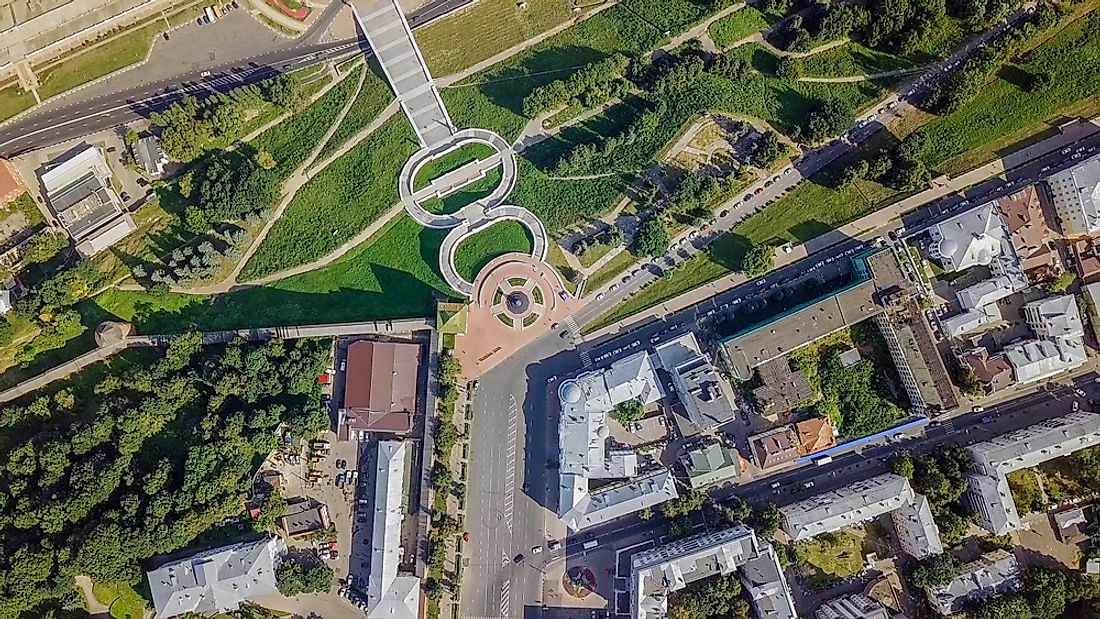Shrinking Cities - Which Cities Are Getting Smaller?

While many of the world's urban centers are growing at frequent rates, some are shrinking due to various reasons. Most of the shrinking cities are located in Japan and Russia which are experiencing low birth rates. Here are some of the world's cities that are shrinking at the fastest rate.
The World's Fastest Shrinking Cities
Nizhniy Novgorod
Nizhniy Novgorod, in Russia, has experienced a negative population growth in its recent history. While the 2016 census reported a population of 1,200,000, it is estimated that the population of the city in 2030 will only be 1,060,000. This represents a negative growth of 0.9%. While Nizhniy Novgorod was known for being an prosperous industrial city during the Soviet era, it has over the years become a shadow of its former self after the closure of major facilities which lead to the mass exodus of residents. Job losses and economic chaos have discouraged young families from giving birth. Life expectancy rate has gone down with more deaths than births being recorded due to low fertility rates in the city.
Tokyo
Tokyo has been the capital city of Japan since 1869. Despite the fact that Tokyo still ranks as one of the most populated metropolitan areas worldwide, the city has recently experienced a rapid decline in population. The fact is attributed to huge numbers of aging people and diminishing birth rates. If young families do opt to have children, they are only choosing to have one or two children at most. The projected population in 2030 will be 37,190,000 down from 38,140,000 people in 2016.
Tbilisi
Tbilisi is the largest city and the capital city of Georgia. Though the location of the city between Asia and Europe makes it an important merchant route, the city has been shrinking with a projection of further shrinking. In 2016, census results indicated there were 1,145,000 people. The number is estimated to be 1,119,000 people by 2030 a - 0.2% growth. The shrinking is due to emigration of people from the country due to the unfavorable economic conditions. The difficult trading climate is forcing some companies, which were historically Tbilisi's biggest employers, to relocate.
Kharkov
Kharkov (or Kharkiv) is today the second-largest city in Ukraine. The city serves as an administrative, educational, industrial, cultural and scientific center. In 2016, the city had a population of over 1,438,000 people, a number that is rapidly decreasing. Kharkov has continually experienced political hostility and economic instability. As a result, many individuals and companies have opted to leave the city in search of more favorable conditions.
Kitakyushu-Fukuoka
Kitakyushu-Fukuoka is a region made up of Kitakyushu and Fukuoka metropolitan areas in Japan. Recent research conducted on the population progress showed a negative growth. In 2016 there were 5,494,000 people – a figure estimated to reduce to 5,355,000 by the year 2030. The shrink is largely due to very low birth rates and an aging society. More people are dying than are being born. Emigration has also been experienced whereby most of the youths are moving away due to the expansion of overseas companies which provide more lucrative job opportunities.
Why Do Cities Shrink?
The phenomenon of shrinking cities is caused by either emigration or natural growth. Deurbanization may further occur when economic sectors such as industries are closed down or natural resources being mined in an area such as iron ore or gold become depleted. Technological changes and environmental degradation are also a major cause of depopulation. Natural growth, on the other hand, is a comparison of birth rates and death rates in a given period of time. Fertility rates can drop leading to population declines such as the one being experienced in Japan and South Korea.
Major Cities That Are Shrinking
| Rank | City | Country | City Population (Est. 2016) | City Population (Est. 2030) | Growth Rate (%) |
|---|---|---|---|---|---|
| 1 | Nizhniy Novgorod | Russia | 1,200,000 | 1,060,000 | -0.9 |
| 2 | Tokyo | Japan | 38,140,000 | 37,190,000 | -0.2 |
| 3 | Tibilisi | Georgia | 1,145,000 | 1,119,000 | -0.2 |
| 4 | Khrakiv | Ukraine | 1,438,000 | 1,393,000 | -0.2 |
| 5 | Kitakyushu-Fukuoka | Japan | 5,494,000 | 5,355,000 | -0.2 |
| 6 | Sendai | Japan | 2,071,000 | 2,012,000 | -0.2 |
| 7 | Seoul | South Korea | 9,779,000 | 9,960,000 | -0.1 |
| 8 | Havana | Cuba | 2,129,000 | 2,104,000 | -0.1 |
| 9 | Osaka | Japan | 20,337,000 | 19,976,000 | -0.1 |
| 10 | Saint Petersburg | Russia | 5,001,000 | 4,955,000 | -0.1 |











